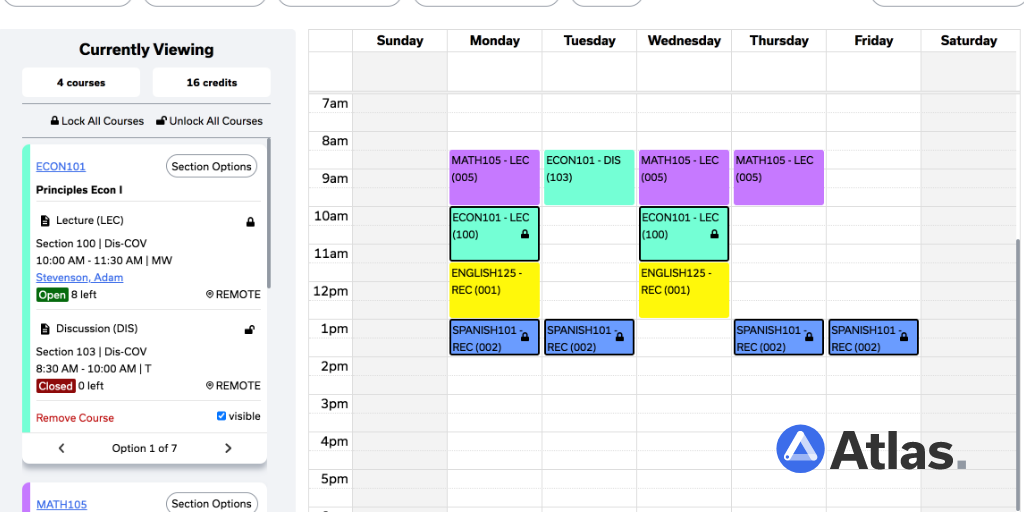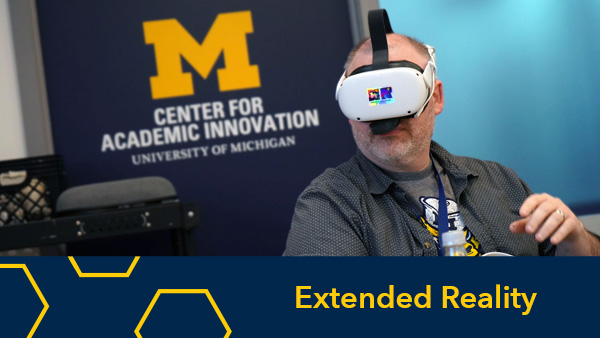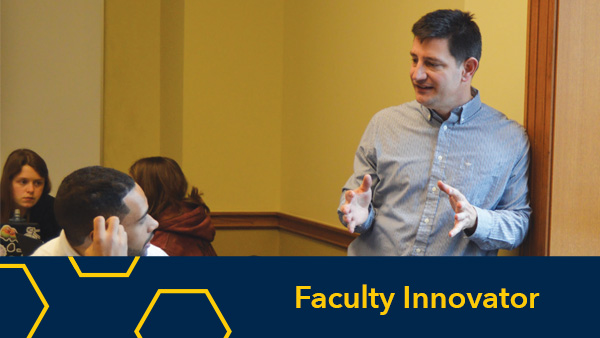Center for Academic Innovation worked for two years with Registrar’s Office, other partners to replace outdated third-party tool
Sean Corp, Content Strategist
University of Michigan students are preparing to schedule classes for fall semester, and a new schedule building tool promises to make it easier than ever before for students to connect with the classes they want and build a schedule perfect for them.
The new Schedule Builder is part of Atlas, a tool developed by the Center for Academic Innovation, that allows students to make more informed academic decisions by providing them with data about courses, instructors and majors.
Now, students will be able to search for classes by keyword, see key info about the instructor and class name all within the same calendar interface. Students can also toggle through all potential scheduling options, block off personal time, lock in key courses and times they prefer, and add and replace courses quickly.

“The goal of Atlas has always been to provide information and transparency to support decision-making across the campus, and particularly for our students,” said Ben Hayward, Center for Academic Innovation Director of Software Development and User Experience Design. “Modernizing the course selection experience was both a massive undertaking and one that we heard as a consistent need from students, advisors and administrators.”
The project is more than two years in the making and replaced a third-party tool the university contracted with but was missing custom features and capabilities long on the university’s wish list. Students will still access the Schedule Builder through Wolverine Access as usual, but now they will be directed to Atlas with new features and functionality to make putting together a schedule much easier.
“A lot of students talk about setting up a schedule and building out their backpack like a shopping experience, and we wanted to embrace that concept. We wanted to enable students to browse, find key information about courses and mix and match options within one interface,” said David Corneail, user experience designer at the center who worked with center staff, students and the Registrar’s Office on the Schedule Builder project.
Download Now | Atlas Schedule Builder Quick Start Guide
“This was an opportunity to support student choice, facilitate access to advisor insights, and streamline the student experience that we felt uniquely positioned to deliver through our strong partnerships with Student Government, Advising, Information Technology Services and the Registrar,” Hayward said.
Thinking about the needs of Michigan students and ensuring constant communication and feedback with that user base helped shape the entire process, Corneail said.

“Right away, we knew we needed to have a very user-centric and student-centric approach,” Corneail said. That meant plenty of student interviews, user testing and even a Design Jam event that brought teams of interested students together to brainstorm features and problem-solving with judges Lisa Emery and Brad Maki from the Registrar’s Office and Gus Evrard, professor of physics and astronomy.
What came away from all of the interviews, plans and tests was clear. The students were craving a modernized tool with a cleaner, more intuitive interface that provided key information but also more customization.
“We asked ourselves, how do you package and bundle decisions? How do you provide the right amount of information to students in a way that is simple, intuitive and not overwhelming?”
The old tool was functional, but the interface made it difficult to sort through and evaluate the options, said David Nesbitt, software portfolio manager at the center.
“Students wanted a more modern, user-friendly approach, and the features we wanted to include lent themselves really naturally to what we already had in Atlas,” Nesbitt said.
Instead of taking cues from the existing tool or other third-party tools they saw other universities using, Corneail said they looked to industry — firms like AirBnB and Amazon that offer a smooth, cutting-edge shopping experience.
“We asked ourselves, how do you package and bundle decisions? How do you provide the right amount of information to students in a way that is simple, intuitive and not overwhelming?”

As the team was forced to transition to remote work, Corneail said he had to get creative in determining what students needed in the tool. That included deep dives on Reddit and even stopping people he would pass on socially distanced walks through his neighborhood in the summer.
It’s not only the students who will benefit from the new Schedule Building tool. With the switch to an existing internally managed tool, the university will also save significant money annually. And because it was built with U-M students and staff in mind, the tool is also accessible by academic advisors, allowing them to discuss options with students and help them prepare for backpacking and scheduling. Advisors didn’t have access to the old schedule builder tool, which was a challenge.

“What we heard from the advisors we spoke to is that they want to be able to use the tool and see what their students see,” Nesbitt said. “They want to be able to have a conversation with a student without having to look over the student’s shoulder at their computer.”
Making the project reality required not only an intensive period of design and development and constant feedback with students, but also close collaboration with ITS to ensure the tool could integrate with student and class systems seamlessly.
With the project almost set to launch after two years of preparation, building and testing, Corneail is excited to finally put it in the hands of students.
“As a user experience designer, you’re never going to get it perfectly right. It’s never one and done.” Still, the early reactions have been promising from all the partners throughout the university who have worked on the project.
“The buzz of creativity, imagining what this tool could be from prototypes to testing and especially the Design Jam has been great,” Nesbitt said. “We always thought about the students first, and we think they’re going to be happy when they use the tool this March.”


